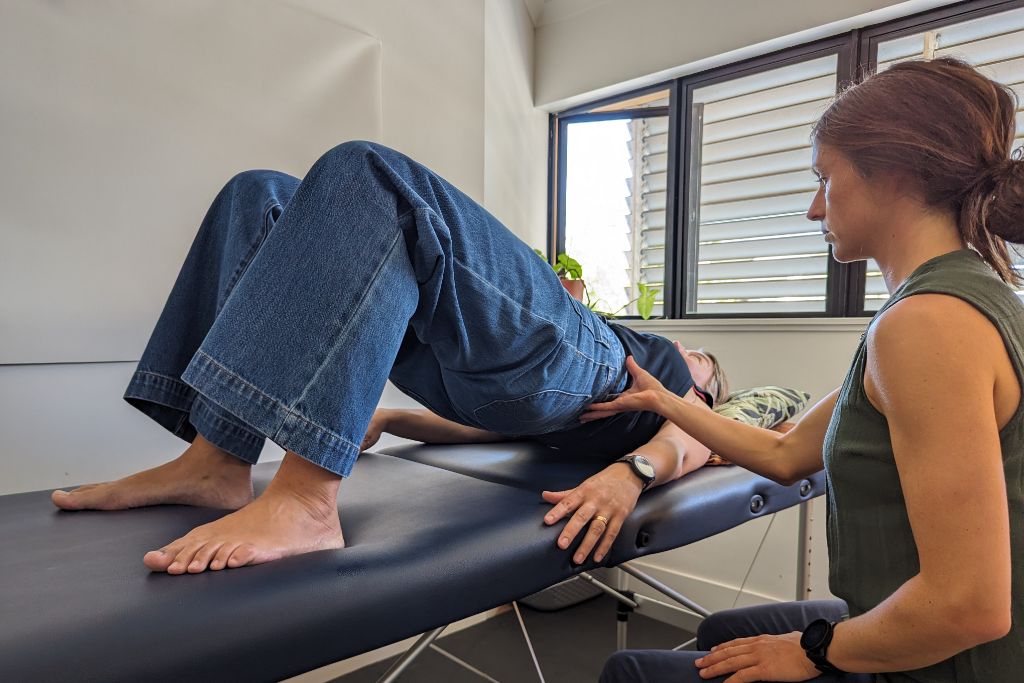Lower back pain is a common issue affecting individuals of all ages. It can arise from various factors, including poor posture, prolonged sitting, heavy lifting, and injury. While seeing a physiotherapist is often beneficial, many people seek ways to relieve their discomfort with at-home exercises that promote strength, flexibility, and pain management. With the option for Physiotherapy at Home in Dubai , individuals dealing with lower back pain can receive expert guidance in the comfort of their own homes. This approach allows for convenient, personalized therapy routines that cater to each person’s needs, helping them regain mobility and reduce discomfort effectively.
Incorporating specific exercises into a regular routine can greatly alleviate back pain over time. Here are some of the best at-home physical therapy exercises to help relieve lower back pain, all of which can be done safely at home. These exercises are designed to improve flexibility, strengthen the muscles around the spine, and promote better posture, providing a sustainable approach to managing lower back pain.
Table of Contents
Toggle1. Pelvic Tilts
Pelvic tilts are simple yet effective exercises that target the lower back and abdominal muscles. They work by gently stretching the muscles around the spine, improving posture, and reducing tension in the lower back.
- How to Perform:
- Lie on your back with your knees bent and feet flat on the floor.
- Tighten your abdominal muscles and press your back against the floor by tilting your pelvis slightly upwards.
- Hold this position for 5 seconds, then relax.
- Repeat 10–15 times.
Benefits: Pelvic tilts are easy to perform and can be done multiple times a day to alleviate back pain. This exercise strengthens core muscles, which support the spine and help improve stability.
2. Knee-to-Chest Stretch
This gentle stretch helps relieve tension in the lower back and enhances flexibility in the hip muscles, often tight in people with back pain.
- How to Perform:
- Lie on your back with your knees bent.
- Bring one knee towards your chest, holding it with both hands.
- Hold the position for 15–30 seconds and then switch to the other leg.
- Repeat 3–5 times per leg.
Benefits: The knee-to-chest stretch helps relax the lower back muscles and relieve pressure on the spine, making it a beneficial stretch for anyone experiencing lower back stiffness.
3. Cat-Cow Stretch
The cat-cow stretch is a classic yoga pose that promotes spinal flexibility and gently stretches the back muscles. It’s an ideal exercise for warming up and loosening tension.
- How to Perform:
- Start on your hands and knees in a tabletop position.
- Inhale and arch your back (cow position) while looking slightly up.
- Exhale, round your spine towards the ceiling, and tuck your chin (cat position).
- Repeat the sequence 10 times, moving slowly.
Benefits: This stretch improves circulation to the spine, relieves tension, and increases flexibility, making it ideal for at-home physiotherapy routines for lower back pain.
4. Bridge Exercise
The bridge exercise strengthens the lower back and glutes, both of which support the spine and improve posture.
- How to Perform:
- Lie on your back with your knees bent and feet flat on the floor, hip-width apart.
- Tighten your core, squeeze your glutes, and lift your hips towards the ceiling.
- Hold the position for 5 seconds, then slowly lower your hips back down.
- Repeat 10–15 times.
Benefits: The bridge exercise is a gentle way to strengthen muscles in the lower back and hips, which can reduce stress on the spine and help with pain management.
5. Child’s Pose
Child’s Pose is a restorative yoga pose that gently stretches the lower back and promotes relaxation, often recommended for easing back tension.
- How to Perform:
- Begin on your hands and knees, then sit back onto your heels.
- Stretch your arms forward, lowering your chest towards the floor.
- Hold the pose for 20–30 seconds and repeat 3 times.
Benefits: This pose helps reduce tightness in the lower back and allows the muscles to relax. It’s a useful exercise for winding down at the end of a workout or at the end of the day.
6. Lumbar Rotation Stretch
Lumbar rotation stretches help improve flexibility in the lower back, relieving muscle tension and providing gentle pain relief.
- How to Perform:
- Lie on your back with your knees bent.
- Slowly lower your knees to one side while keeping your shoulders flat on the floor.
- Hold the position for 10–20 seconds, then switch sides.
- Repeat 3–5 times on each side.
Benefits: This exercise loosens tight muscles around the lower back and spine, which can be especially helpful for those who experience stiffness.
7. Bird-Dog Exercise
This is a balancing exercise that targets both the lower back and core muscles, enhancing stability and strength in the spine.
- How to Perform:
- Begin on your hands and knees.
- Extend one arm forward while extending the opposite leg behind you, keeping your spine straight.
- Hold for a few seconds, then switch sides.
- Repeat 10–15 times on each side.
Benefits: The bird-dog exercise promotes core stability, which is crucial for reducing stress on the lower back and preventing future pain.
When to Consider Physiotherapy at Home in Dubai
While these exercises can provide relief and help manage lower back pain, having a qualified physiotherapist guide you at home can be immensely beneficial, especially if you experience recurring or severe pain. Physiotherapy at home in Dubai offers personalized support, allowing therapists to customize treatment plans based on individual needs and progress. Home-based physiotherapy also enables the therapist to observe your daily activities and make adjustments to your routine to optimize recovery and pain relief.
Tips for Effective At-Home Physical Therapy
- Warm-Up First: Before starting any exercise, take a few minutes to warm up your body. Light stretches or a short walk can prepare your muscles and reduce injury risk.
- Maintain Good Form: Proper form is crucial in all exercises to prevent further injury. If unsure about your form, a physiotherapist can guide you on how to perform exercises correctly.
- Listen to Your Body: Don’t push through pain. Mild discomfort is normal, but if you experience sharp or severe pain, stop immediately and consult a healthcare provider.
- Stay Consistent: Consistency is key for long-term pain relief. Aim to do these exercises regularly, and gradually increase the number of repetitions as your strength improves.
In conclusion, these at-home exercises can provide effective relief for lower back pain by improving strength, flexibility, and posture. However, for those seeking more targeted guidance, physiotherapy at home in Dubai can provide the expertise needed for a tailored, safe, and effective pain management plan. With the right approach, you can manage and potentially eliminate lower back pain, enhancing your quality of life and mobility.




